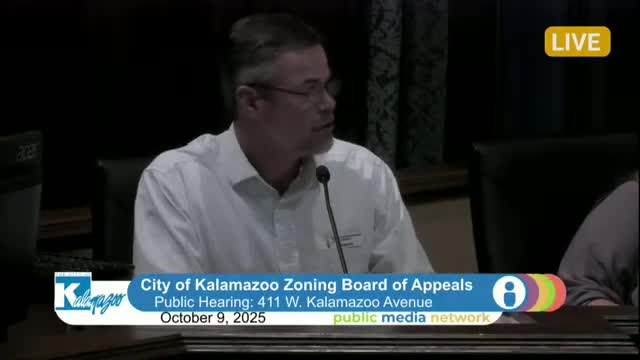Kalamazoo begins planning to convert biosolids to dry ash to cut hauling costs and odors
October 10, 2025 | Kalamazoo City, Kalamazoo County, Michigan
This article was created by AI summarizing key points discussed. AI makes mistakes, so for full details and context, please refer to the video of the full meeting. Please report any errors so we can fix them. Report an error »

City of Kalamazoo public services staff briefed stakeholders on Sept. 24 about a planned shift in how the Kalamazoo Water Reclamation Plant handles biosolids. The plant currently thickens sludge and hauls it off‑site to landfills; staff said that practice costs about $13.5 million a year and is the system’s largest operating cost. Staff presented an alternative package — mechanical drying followed by a high‑temperature thermal conversion unit (BioCon/energy recovery furnace) — that would produce a mineral ash and reduce volume, weight and odors dramatically.
Under the plan presented, the plant would continue to thicken sludge using centrifuges; the cake would be processed in a dryer to increase solids content and then fed to a BioCon-style furnace that would thermally convert the material to mineral ash. The ash is largely inert, contains a very small volume compared with the original wet cake, and would either go to a landfill at far lower volume or be considered for beneficial reuse (for example, in engineered materials) where permitted. Staff said preliminary analysis suggests the project could pay back in about seven to ten years and yield recurring savings by eliminating the large annual hauling expense. Staff also said thermal conversion was selected because it treats and destroys PFAS and provides advanced emissions controls compliant with EPA requirements.
Public services director James Baker and consultant representatives described a timeline that includes a public meeting in March to present alternatives, an April application to state funding authorities, and a potential 2026 bidding process if state funds are awarded. Staff said a favorable funding decision could allow the city to proceed to design and construction; if so, the city would retire most of the recurring sludge‑hauling cost after commissioning. Staff emphasized that the project remains subject to permitting, environmental review, emissions controls and design refinements.
The proposed approach also aims to address community concerns about odors from the current wet‑cake handling and storage. Staff said previous odor-control investments reduced odors but that the wet‑cake storage and hauling process remains the plant’s largest odor source. Drying and conversion would move the facility away from managing large volumes of wet, odorous material onsite. Staff recommended the board support the grant application and continued community engagement; the board/staff plan a March public meeting and promised to publish permitting and environmental review materials as the project advances.
Next steps: staff will finalize a state funding application in April, hold a public meeting in March, and — if funded — move toward procurement and construction; early estimates show a payback of 7–10 years and potential elimination of the city’s $13.5M annual hauling expense if the conversion system is implemented.
Under the plan presented, the plant would continue to thicken sludge using centrifuges; the cake would be processed in a dryer to increase solids content and then fed to a BioCon-style furnace that would thermally convert the material to mineral ash. The ash is largely inert, contains a very small volume compared with the original wet cake, and would either go to a landfill at far lower volume or be considered for beneficial reuse (for example, in engineered materials) where permitted. Staff said preliminary analysis suggests the project could pay back in about seven to ten years and yield recurring savings by eliminating the large annual hauling expense. Staff also said thermal conversion was selected because it treats and destroys PFAS and provides advanced emissions controls compliant with EPA requirements.
Public services director James Baker and consultant representatives described a timeline that includes a public meeting in March to present alternatives, an April application to state funding authorities, and a potential 2026 bidding process if state funds are awarded. Staff said a favorable funding decision could allow the city to proceed to design and construction; if so, the city would retire most of the recurring sludge‑hauling cost after commissioning. Staff emphasized that the project remains subject to permitting, environmental review, emissions controls and design refinements.
The proposed approach also aims to address community concerns about odors from the current wet‑cake handling and storage. Staff said previous odor-control investments reduced odors but that the wet‑cake storage and hauling process remains the plant’s largest odor source. Drying and conversion would move the facility away from managing large volumes of wet, odorous material onsite. Staff recommended the board support the grant application and continued community engagement; the board/staff plan a March public meeting and promised to publish permitting and environmental review materials as the project advances.
Next steps: staff will finalize a state funding application in April, hold a public meeting in March, and — if funded — move toward procurement and construction; early estimates show a payback of 7–10 years and potential elimination of the city’s $13.5M annual hauling expense if the conversion system is implemented.
View full meeting
This article is based on a recent meeting—watch the full video and explore the complete transcript for deeper insights into the discussion.
View full meeting
